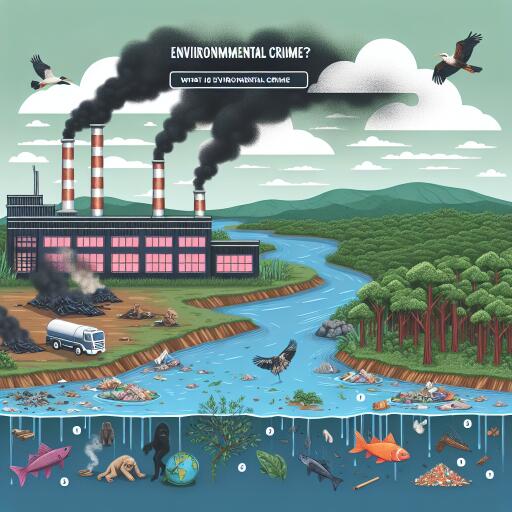
Explainer: What Is Environmental Crime? | Earth.Org
Environmental crime represents a significant threat to our planet, yet it often flies under the radar, underestimated, and lacking the vigorous attention it demands from global enforcement. This phenomenon doesn’t just strain biodiversity and socio-economic frameworks; it’s a rapidly escalating menace with detrimental effects that are far-reaching and indiscriminate.
Environmental crime involves a spectrum of illegal acts, from wildlife trafficking to illegal logging, mining, and pollution, causing substantial harm to the environment. It stands as a complex challenge, necessitating a deep dive to grasp its nuances and devise strategies for effective combat.
Despite posing a dire risk to both the environment and human societies, environmental crimes frequently do not receive the priority they require from international enforcement bodies and governments. The casual oversight of these crimes only serves to aggravate their severity and profitability. As the United Nations Office on Drugs and Crime (UNODC) points out, no country is immune to the impacts of environmental crime, which undermines national security, and hampers sustainable development.
The ambiguity surrounding the definition of environmental crime makes it harder to tackle. The United Nations Environment Programme (UNEP) and INTERPOL define it broadly as illegal activities that profit at the environment’s expense, encompassing a range of offenses from wildlife crimes to pollution and illegal resource extraction.
Poised on a growth trajectory that outpaces the global economy, environmental crime, with its annual growth rate of 5-7%, has morphed into a lucrative underworld enterprise. Generating up to $281 billion annually, it tempts organized gangs with its high-reward, low-risk appeal. This crime manifests in various forms, dedicating its proceeds to fuelling further illegal activities that span across continents.
The lack of substantial action and policy coherence, both nationally and internationally, has catapulted these activities into a realm where they operate with minimal resistance. On a global scale, the financial damages incurred dwarf the resources dedicated to their eradication, leaving enforcement agencies outpaced and outdated in their strategies.
At its core, the perpetuation of environmental crimes is pegged to several driving factors, including poor governance, corruption, lack of funding, and ineffective international cooperation. These structural failings at the governance level create a breeding ground for such crimes, with no simple solutions at hand.
Further complicating matters is the interaction between poverty, demand, and the profitability of environmental crimes. Exploited communities find themselves in a vicious cycle where immediate profits from illegal activities stand in stark contrast to legal livelihoods, further entrenching these crimes into the fabric of society. The constant demand for wildlife products, illegal minerals, and other natural resources ensures a steady income stream for criminal enterprises, exacerbating the situation.
The consequences of these crimes touch upon every facet of life, endangering species, degrading ecosystems, affecting human health, security, and economic development. The loss of biodiversity and ecosystem services threatens food security, climate regulation, and livelihoods, plunging communities into deeper poverty and vulnerability.
Efforts to counter environmental crime have shown promise in some regions. Brazil’s crackdown on illegal deforestation and China’s efforts to protect the Tibetan antelope exemplify the potential effectiveness of targeted enforcement and comprehensive regulatory frameworks. These success stories offer a glimmer of hope and a template for other nations to emulate.
Internationally, agreements like the Montreal Protocol illustrate the power of collective action against environmental crimes, demonstrating significant progress in curbing illegal trade and environmental degradation. Likewise, the recently enhanced Environmental Crimes Directive (ECD) by the European Parliament underscores the need for updated and stringent legislation to protect the environment within the EU.
Combatting environmental crime requires a unified and immediate global response, recognizing it as a grave threat that demands a coordinated, multifaceted approach. By acknowledging and addressing the root causes, enhancing international cooperation, and enforcing strict legal frameworks, progress can be made. At the consumer level, informed choices and responsible reporting can disrupt the supply chains of illegal wildlife and other environmentally detrimental products.
Moreover, a comprehensive strategy that integrates national efforts with international support will fortify the fight against environmental crime. United, the global community can pave the way for sustainable ecosystem management, preservation, and conservation, ensuring a healthier planet for current and future generations.





Leave a Reply